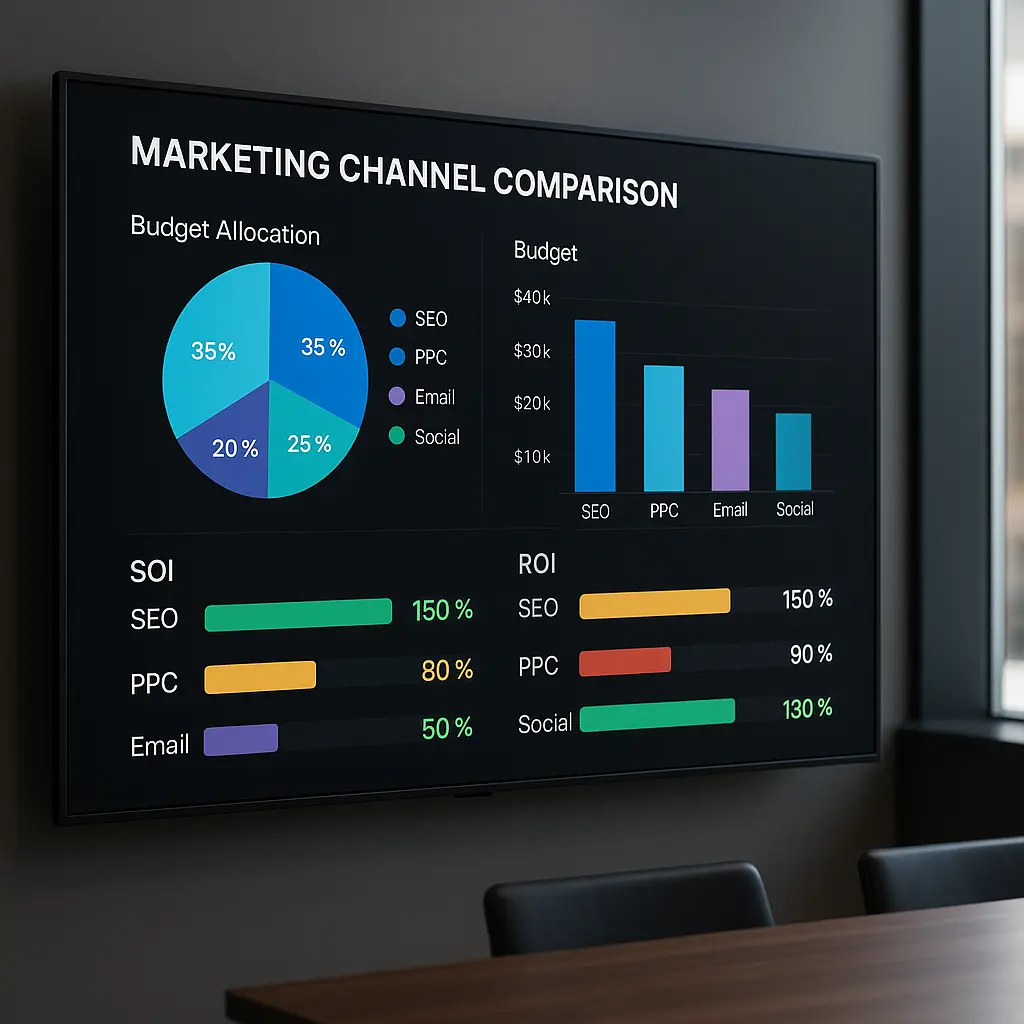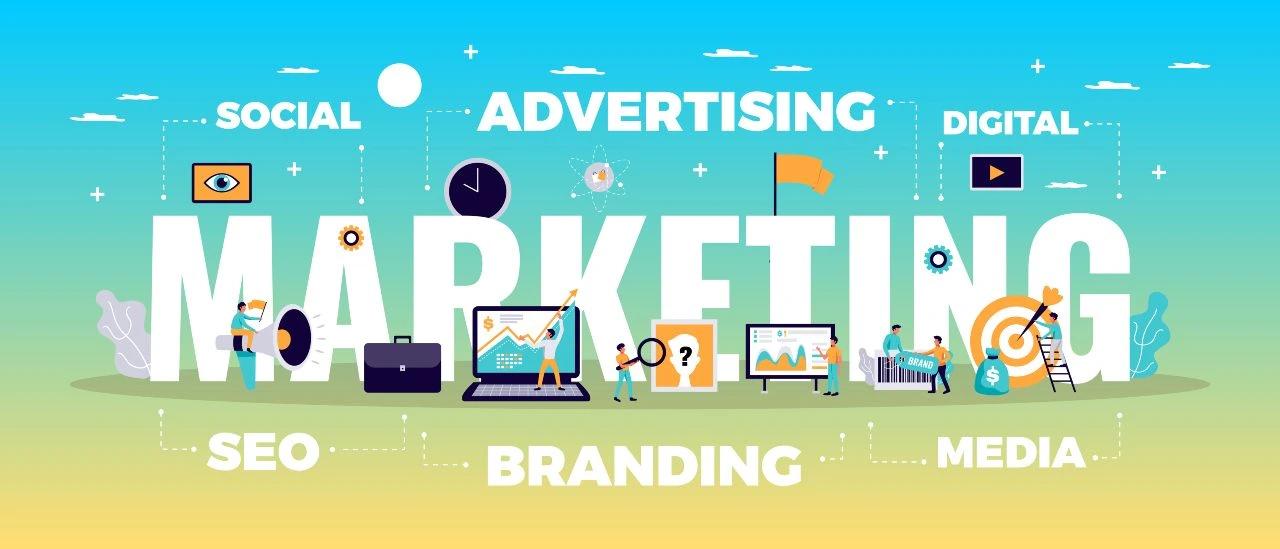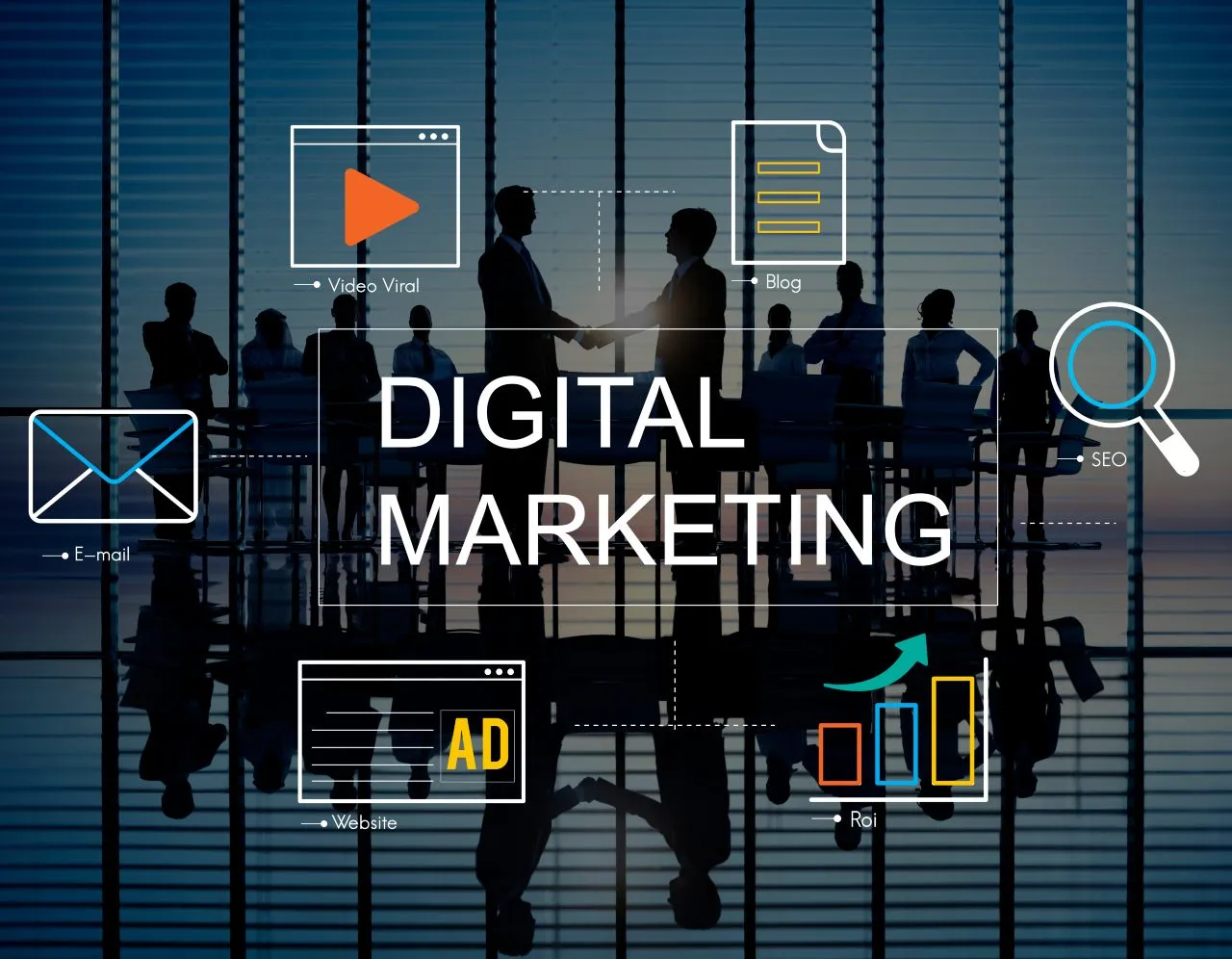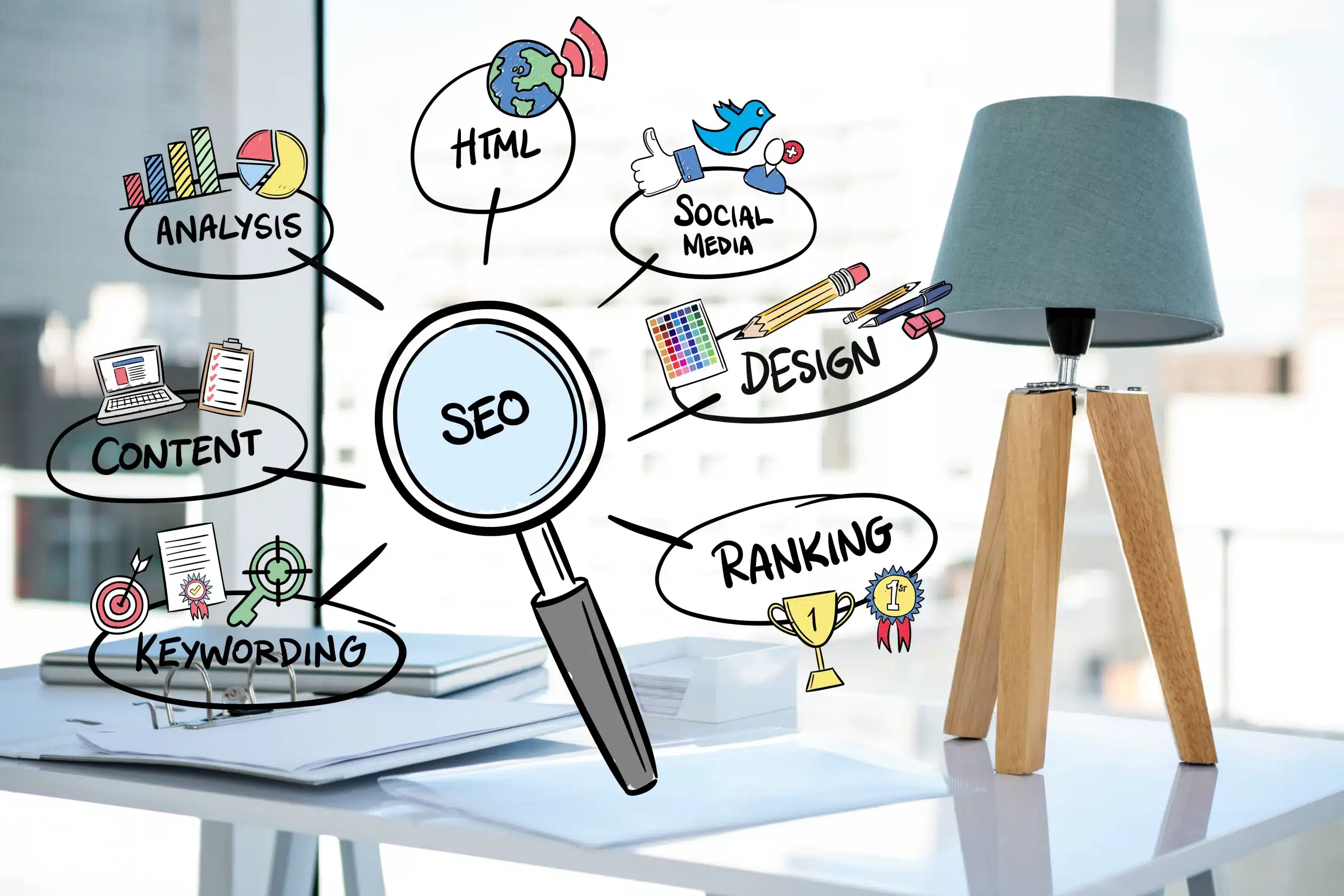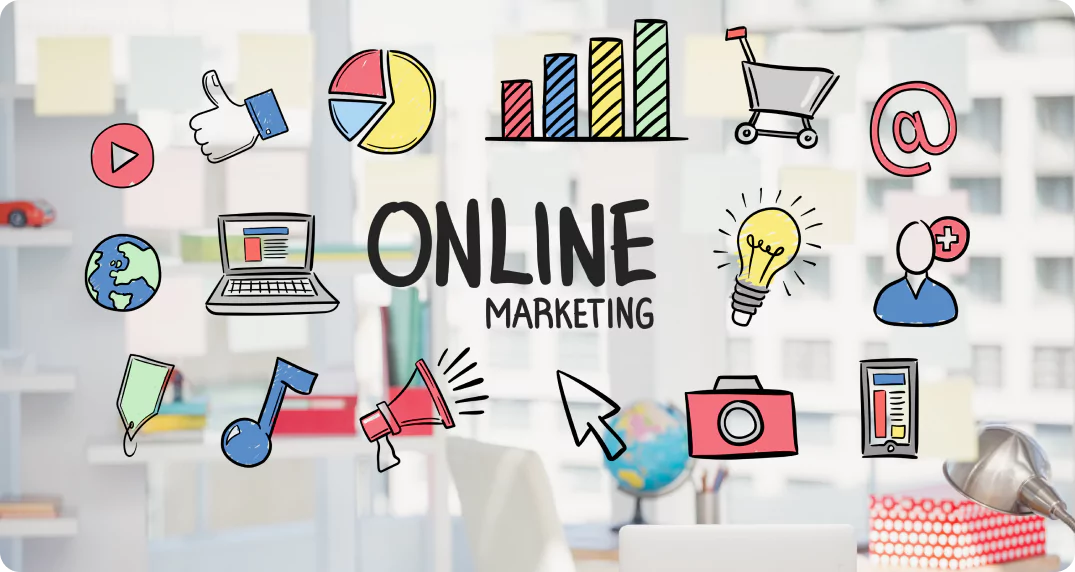Listen to article
With a solid B2B website strategy, your brand can generate leads, build credibility, and nurture customer relationships that fit the longer sales cycle typical of B2B. In fact, 68% of B2B companies plan to use landing pages to nurture new sales leads for future conversions.
So, how can you build a B2B website strategy that actually brings in results? In this article, we will give you a step-by-step guide for creating an effective B2B website strategy and share with you the main components that influence its success. Let’s get started.
What Makes a B2B Website Strategy Different?
B2B websites aren’t just storefronts for showcasing products or services. Instead, they are supposed to be a hub for information, a tool for engagement, and a platform for nurturing relationships.
Unlike B2C websites that are designed for quick purchases, B2B sites target an audience with a much longer decision-making process. This lengthy nurturing stage involves multiple stakeholders. So, the differences between B2B website strategies and other websites are many.
Main objectives of a B2B website strategy
To show you what makes a B2B website strategy unique, let’s understand its main purposes.
- Nurturing leads by offering them resources throughout the buyer’s journey.
Example: If you run a website in the medical industry, you can share downloadable whitepapers on regulatory compliance or new healthcare technologies like HIPAA. These resources guide potential clients in your sales cycle from initial research to making informed purchasing decisions, nurturing them every step of the way.
- Engaging stakeholders and catering content specifically to decision-makers and influencers in a company.
Example: Take a SaaS company targeting CFOs. Your website could feature ROI calculators or case studies showing how your solution reduces costs. At the same site, you can include a detailed technical FAQ on your website to address IT managers’ concerns.
- Building trust by showing case studies, testimonials, and certifications that establish credibility.
Example: Consider a manufacturing business showcasing a case study about how its equipment improved production efficiency for a high-profile client. Add testimonials from satisfied customers and certifications like ISO standards to reinforce credibility.
By focusing on these key objectives, you can create a website that not only attracts visitors but also effectively engages and converts them. But how do you bring all these elements together into a cohesive strategy?
8-Step Guide to Building a Winning B2B Website Strategy
Building an effective B2B website strategy from scratch is no easy task. Depending on your goals and requirements, your website will need to go through different development processes. To make it all easier, we’ve put together an 8-step guide you can follow.
Step 1: Define Business Objectives
Start by aligning your website’s goals with your overall business strategy. Do you want to increase lead generation, improve client retention, or expand into new markets? Having clear and measurable goals will guide you in every website-related decision you need to make.
Step 2: Understand Your Target Audience
B2B buyers are known to have specific needs and expectations. To meet those needs, your B2B website strategy needs to be based on detailed buyer personas.
Remember to outline their roles, pain points, and decision-making criteria. For example, if you have a B2B website in the SaaS industry, you might have these three buyer personas:
- CFO Chris – A decision-maker who prioritizes cost-efficiency and ROI, looking for detailed pricing pages and ROI calculators.
- IT Manager Ingrid – A technical evaluator who needs detailed product specs, integration guides, and security certifications.
- Operations Specialist Omar – An end-user interested in user-friendly interfaces, tutorials, and customer support options.
Once you understand these personas, you can make a website and create content that resonates with each stakeholder.
Step 3: Conduct Competitive Analysis
With the next step, you need to research your competitors’ websites. What do you like? What don’t you like? Identify their strengths, weaknesses, and areas of differentiation.
All this info can help you focus on areas where you can differentiate, such as better UX design, richer content, or more streamlined navigation.
Step 4: Plan Your Website Structure and Navigation
The 4th step is further from research and closer to hands-on B2B website strategy building. Here, you need to understand what pages your website needs to have and how you can structure all of them in an intuitive way.
You might want to start with the first step of developing a sitemap to outline the structure of your website. Here, a great SEO team can help you identify which pages are essential, especially if you’re unsure of where to begin. Most websites benefit from having key pages like:
- Homepage
- Product or service pages
- Case studies
- Contact forms
Depending on your industry, you might also need specialized pages, such as a blog for thought leadership or a resources section for downloadable content.
Once your sitemap is in place, the next step is turning it into a functional website. This is where a skilled web development team can step in to create a seamless user experience, ensuring the site is not only visually appealing but also technically sound.
By working with both an SEO and a development team, you’ll set your website up for success from both strategic and technical perspectives.
Step 5: Develop a Content Strategy
The next step will be about creating a B2B website content strategy. Your content will be the heart of your website, so you need to focus on pushing resources that engage and educate your audience, such as:
- Whitepapers that showcase your expertise and experience.
- Case studies that show off success stories and results.
- Blog posts that address industry challenges and trends.
All of this content will need to resonate with B2B audiences, so focus on tailoring each piece you produce to your target audience’s unique needs.
Step 6: Optimize for SEO and User Experience (UX)
Did you know that 2/3 of B2B buyers look for products online before making a purchase? Optimizing your website for search engines should be a top priority. You’ll need SEO services like keyword optimization, mobile-first design, and technical SEO best practices like site speed. And these are just the basics.
Full SEO optimization involves much more, from advanced schema markup to building a strong backlink strategy and ensuring your site stays updated with search engine algorithm changes.
A top-notch B2B website strategy should also include an amazing user experience (UX) to make sure visitors keep engaging with your website. This is where first impressions last. In fact, 94% of first impressions of a website depend on design. It builds trust and credibility.
Step 7: Integrate Lead Generation Tools
Your visitors always need a last push to move to the next step of your sales funnel. So, you’ll need to use effective lead generation tools like:
- Landing pages
Landing pages are targeted pages that promote specific campaigns or services. Include these in your B2B website strategy to get the most out of your website.
- Forms and gated content
Lastly, you must include forms across your website. You can couple them up with gated content like whitepapers that you will share with visitors in exchange for their contact information.
Pro tip: CTAs play a huge role when turning visitors into leads. In fact, clear and specific CTAs have the power to increase your conversion rates by 161%. Use them to make your lead generation tools way more effective.
If you’re new to lead generation, consider investing in lead generation services to help you turn your website visitors into actual clients. For example, we have helped our clients boost their leads by an average of 265%. From referral programs to lead qualification and scoring, professional guidance can be a gamechanger for your B2B business.
Step 8: Analyze and Iterate
Last but not least, when building your B2B website strategy, you must implement tools for tracking and optimizing the performance of your website. Use Google Analytics and Search Console as free tools to measure:
- Bounce rates
- Conversion rates
- Time spent on the website
- Traffic sources
To go a step further and track advanced metrics, you can use other tools like Semrush or Ahrefs. These powerful analytics tools can show you how your keywords are performing, what the SEO health of your website looks, and more.
All these insights can be learning points and unlock areas for improvement. Remember that your website needs regular updates and new content to stay relevant for search engines.
Key Components of a Winning B2B Website Strategy
While creating your B2B website strategy, there are a couple of key insights you should keep in mind. Great design won’t cut it anymore. You’ll need to create a strong combination of user-focused features, great content, and technical optimizations.
To make sure your website succeeds, you’ll need to follow best practices like simplifying navigation for different stakeholders, including trust signals like certifications and testimonials, as well as tracking and optimizing your performance. Only then can you rest easy knowing that your website is set up for success.
Let’s talk about the 4 components that can determine the effectiveness of your B2B website.
User-Centric Design
Your site’s design should guide visitors effortlessly toward the information they need. Features like intuitive navigation, clear CTAs, and mobile-first layouts make all the difference.
For example, a well-designed B2B website should use simple navigation menus, easy-to-locate CTAs like “Try for Free,” and a responsive design that works seamlessly on any device. These elements ensure that users can quickly find solutions, whether they’re browsing on desktop or mobile.
Check out Slack’s website as an example and pay attention to the CTAs they strategically place to improve their conversions:
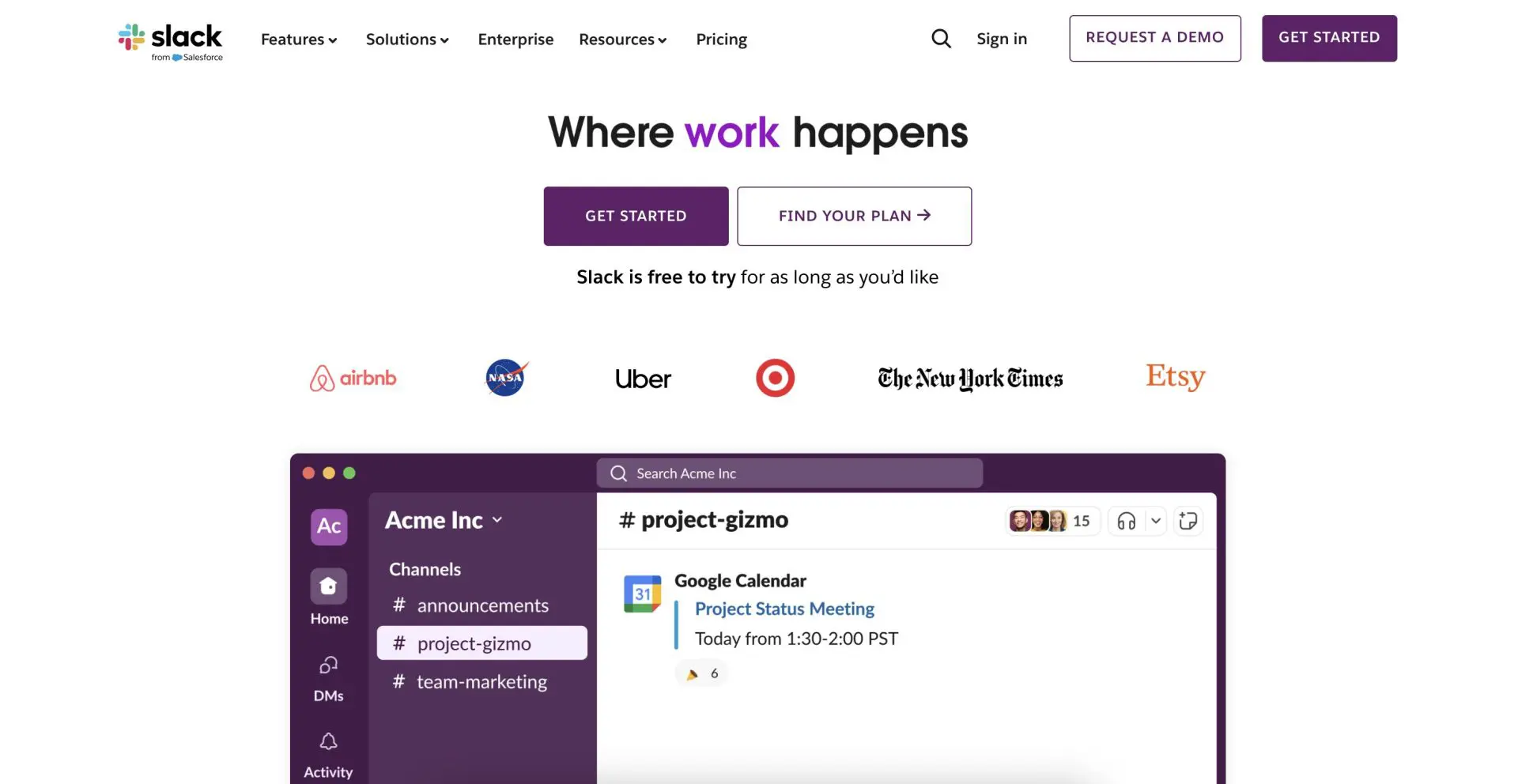
Compelling Content Strategy
The visibility of your website is partially driven by your content. So, you’ll need to tailor your content to the needs of decision-makers and publish:
- Blogs for industry insights
- Testimonials for building trust
- Whitepapers for in-depth knowledge
Optimized Lead Generation
All effective B2B website marketing strategies prioritize lead generation. Pay close attention to tools like contact forms, gated content, and personalized landing pages. These will help you generate leads and nurture them towards a conversion.
SEO and Technical Optimization
SEO is the key to bringing traffic to your website. Optimizing for keywords, improving page speed, and implementing schema markups are non-negotiable. Having a fast-loading website with regularly updated content can do wonders for your visibility, bringing in organic traffic full of B2B buyers.
Common Mistakes to Avoid in Your B2B Website Strategy
Best practices are used to optimize B2B websites. Nevertheless, their effectiveness can be minimized if you don’t pay attention to avoiding common mistakes, such as:
- Overcomplicated navigation, which can drive up your bounce rates.
- Lack of mobile-friendly design, which can off-put a majority of your visitors.
- Ignoring SEO or poor content targeting, which can make all your hard work useless.
- Failing to include clear CTAs or lead capture forms, which can make you lose out on potential leads.
Why Partnering with a Marketing Agency Can Transform Your B2B Website?
Building a B2B website strategy without prior experience can turn out to be ineffective and inefficient. Implementing our 8 steps effectively often requires professional expertise, making an experienced agency invaluable. That’s when you should start thinking about hiring a digital marketing agency.
Agencies bring expertise, tools, and customized strategies that save your time and yield better results in terms of lead conversions. Here are a couple of benefits you can look forward to when working with a top-notch agency.
Expertise in Strategy and Design
If you’re looking for professional expertise in user experience, SEO, content strategy, and lead generation, ensuring a cohesive approach, working with an agency is the way to go.
Your in-house teams will spend a lot of time and effort on building a productive B2B website strategy, and outsourcing complex tasks can help you save on all of it. So, consider investing in web design and development services to let the pros handle this important step.
Access to Advanced Tools and Techniques
An experienced agency knows the value of analytics and insights. So, they leverage advanced tools, perform A/B testing, and use industry insights to modify and optimize strategies.
As a full-service marketing agency, Scopic Studios has the capabilities and capacity to integrate cutting-edge tech into your B2B website strategy, including mobile-friendly and conversion-centric designs.
We’ve created websites for B2B companies in healthcare like WorldClinic that boosted their conversion rate by almost 3,000% and total visitors by 51.9%. Our experience extends across many industries like tech where we increased the total clicks for Codeaid by 52.46% using advanced SEO strategies.
Seamless Implementation and Long-Term Support
Last but not least, working with an agency means having an easy implementation process and ongoing support for your B2B website. From conceptualizing the strategy to maintaining and optimizing your website post-launch, agencies usually offer end-to-end support.
Here at Scopic Studios, we provide ongoing services like:
- Content updates
- Analytics tracking
- Iterative improvements
- And much more
Conclusion: Elevate Your B2B Website with a Winning Strategy
A smart B2B website strategy can be your path to achieving your business goals. If done right, it will engage stakeholders and drive measurable outcomes. Whether you’re starting from scratch or optimizing your existing website, following our 8-step process will set you up for success.
Ready to create a conversion engine for your B2B business? Partner with a full-service marketing agency like Scopic Studios to bring your vision to life. With our expertise in UX, SEO, and content strategy, we’ll help you create a website that simply delivers results. Get a free consultation and let’s bring your project to life.
FAQs
What is a B2B website strategy?
Why is a B2B website strategy important?
How is a B2B website different from a B2C website?
What are the key components of a B2B website strategy?
- User-centric design with intuitive navigation, responsive layouts, and clear CTAs.
- Compelling content with high-value resources tailored to decision-makers, such as blogs, whitepapers, and testimonials.
- SEO optimization with keyword integration, technical SEO best practices, and mobile-first design.
- Lead generation tools like forms, gated content, and personalized landing pages to capture and nurture leads.
How can I improve lead generation on my B2B website?
- Create clear CTAs and encourage your visitors to take specific actions like “Downloading an eBook” or “Book a demo.”
- Optimize landing pages for conversions and trust-building.
- Use gated content like eBooks or case studies in exchange for contact information.
- Streamline forms and keep them simple, asking only for essential info.
Why should I hire an agency for my B2B website strategy?
How long does it take to create a B2B website strategy?
Note: This blog’s images are sourced from Freepik.

































































